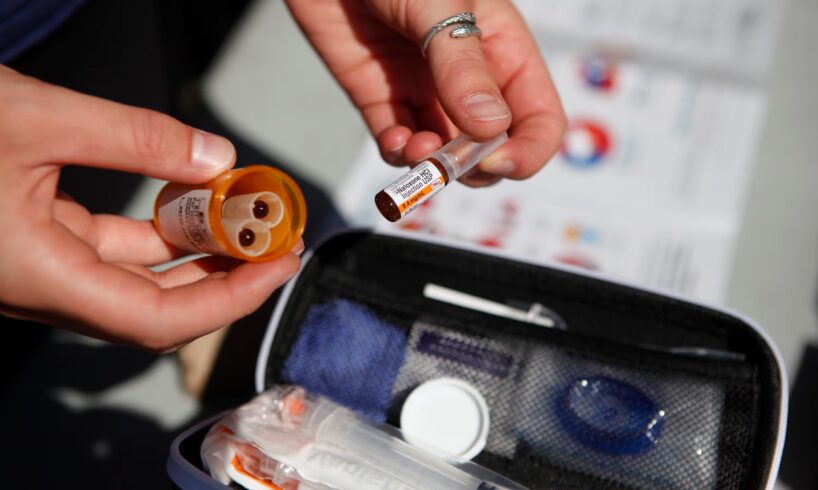
Open this photo in gallery:
Naloxone reverses the effects of an opioid overdose. One physician says all parents should have it on hand and teach their children how to use it.CHAD HIPOLITO/The Canadian Press
Doctors are calling on provinces to bolster addiction treatment services in response to growing opioid use among young people, a crisis they fear will escalate for decades to come if immediate action is not taken.
In a Canadian Medical Association Journal (CMAJ) editorial published Monday, physicians Shannon Charlebois and Shawn Kelly say the escalation of opioid use among youth is being overlooked. Existing addiction services, they say, are also inadequate to meet the needs of young people with opioid use disorder, or OUD.
“Health systems’ inaction and lack of investment to provide evidence-based addictions services for youth is inexcusable,” the editorial says. “Physicians who treat youth need support to be able to care for their patients with OUD. Anything less represents complicity in the next decade of preventable deaths.”
The latest Ontario Student Drug Use and Health Survey, which anonymously surveyed more than 10,000 students, found that 21.8 per cent used prescription opioids in 2023, up from 12.7 per cent in 2021. Students in Grades 7 to 9 were more likely to report use than those in Grades 10 to 12.
In British Columbia, the editorial says, unregulated drugs were the leading cause of death among 15- to 18-year-olds in 2021. Provincial data show 29 children under 18 died that year from drug poisonings. Youth deaths have been increasing in the province since 2016, according to a report from last year.
Several cities have declared states of emergency owing to public disorder triggered by fentanyl crisis
Dr. Kelly sees youth with opioid use disorder in his office often. He said he’s particularly concerned with the increasing popularity of hydromorphone, sold under the brand name Dilaudid.
“There’s just been a cultural shift and opioids have become a much more real part of some people’s high school experience than it ever was before,” he said in an interview.
Dr. Kelly is one of only a handful of pediatric doctors in the country that specializes in adolescent addiction medicine. He said opioid agonist therapies, such as suboxone and methadone, are the first line of treatment for youth with OUD. He stressed that the root causes of a patients’ addiction must also be addressed, through such services as therapy.
The problem, however, is that many doctors in Canada are uncomfortable or unwilling to prescribe these treatments due to stigma or lack of training. Additionally, the editorial says, youth substance use programs “remain scarce, fragmented, and often privately funded” with lengthy wait lists.
Other factors, such as low socioeconomic status, limited supports in rural and remote areas, and racism, impact treatment.
“The result: Families in crisis cobble together care from emergency departments, under-resourced school counsellors, and private-pay therapy accessible to few,” the CMAJ editorial argues.
Why are overdose deaths in Europe a fraction of those seen in North America?
In an interview, co-author Dr. Charlebois said attention should also be paid to interrupting youth drug use before it becomes chronic. Abstinence-only education programs have not worked, she said, and rarely does punishment.
She said all parents should have naloxone, which reverses the effects of an opioid overdose, on hand and teach their children how to use it. She said adults should also foster a culture where young people feel safe in asking for help.
Also on Monday, the medical journal released new research on opioid-prescribing trends. The analysis, which looked at data from six provinces, shows the dispensing of opioids to new patients declined by eight per cent in 2022 from 2018.
Tara Gomes, one of the study’s authors, said this is a positive trend. But she said one concern that the research highlighted was that some prescribers are outright refusing to prescribe opioids.
“Opioids have a place in clinical practice, but it’s really about making sure that when they are accessed, it’s required that people have tried other alternatives, and that they’re prescribed as low dose and short a time period as possible,” Dr. Gomes said.
Most drug deaths in Canada are linked to illicit drugs.





